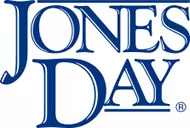- within Strategy and Coronavirus (COVID-19) topic(s)
Evidence is a key battleground in virtually all patent litigation cases. As a Court designed to combine the best and most efficient features of the main EU national patent litigation systems, the Unified Patent Court ("UPC") logically includes the possibility to request and perform infringement seizures—also called "saisies," "dawn raids," or "orders to preserve evidence"—in order to search for and secure evidence of alleged acts of infringement in virtually any location and against any party, under conditions that draw heavily from the French "saisie-contrefaçon" and the Italian "descrizione." Two years after the entry into force of the UPC in June 2023, a critical mass of saisie orders have been issued, the study of which provides valuable insights on the best practices and issues at stake for litigants at both ends.
While the concept of "inspection proceedings" in cases of unclear infringement is already well-known and practiced in several UPC member states (e.g., German 'Besichtigung', Dutch 'bewijsbeslag'), the concept of performing an unannounced "saisie" in order to secure evidence in view of an action on the merits is more specific to the French, Belgian and Italian legal traditions. The latter option is however now available in the UPC and can be performed in any participating Member State.
The early infringement seizure orders and proceedings show that UPC saisies are gaining momentum and are being increasingly used by litigants to support cases, including before UPC divisions and judges previously less familiar with saisies (Munich, Copenhagen, The Hague). These first proceedings confirm that saisies authorizations can be obtained relatively easily at the UPC, when needed, through ex parte proceedings that are usually handled by the court within a matter of days, and that the scope of permissible search measures is very broad, subject to sufficient substantiation within the saisie request as to why each measure is required. Despite this overall ease of access, these proceedings highlight the importance of a thoroughly reasoned request to meet all of the court's standards, particularly concerning prima facie evidence of the alleged infringement, urgency and proportionality. Finally, they also demonstrate the need for patentees to pay close attention to the execution of the saisie including assembling an efficient and strategic team of attendees (usually a bailiff, a patent attorney and a computer forensics expert), to the conditions under which they will gain access to the saisie report and evidence, and to the aftermath of the saisie (deadlines for initiating subsequent proceedings on the merits, potential requests for review, etc.).
Once all local and regional UPC divisions become familiar with saisies under the UPC Rules of Procedure—a development likely spurred by the early pioneering orders already issued and discussed below—they could become an important feature of UPC litigation practice and act as a "gold standard" among other means of gathering evidence (forced production of evidence, right to information, affidavits, hearing of witnesses) some of which are subject to stricter requirements under the UPC's current case law.
ROUNDUP OF UPC SAISIE PROCEEDINGS
During the first two years of the UPC, at least 17 cases have involved a saisie request (though the actual number may be higher considering saisies requests that were withdrawn by the applicant, denied by the court without publication, or arose in the context of proceedings that are not yet public), i.e.:
Fourteen cases in which one or several saisie orders have been granted ex parte:
- Milan LD, 13-14 June 2023, Oerlikon Textile v. Himson Engineering, Bhagat Group (UPC_CFI_240-241/2023)
- Brussels LD, 21 September 2023, Jozef Frans Nelissen v. OrthoApnea S.L. (UPC_CFI_329/2023)
- Milan LD, 25 September 2023, Progress Maschinen & Automation v. AWM and Schnell (UPC_CFI_286-287/2023)
- Paris LD, 14 November 2023, C-Kore System Limited v. Novawell (UPC_CFI_397/2023)
- Copenhagen LD, 26 August 2024, Hybridgenerator ApS v. HGSystem ApS, Infotech Concept ApS, Rune Eilertsen (UPC_CFI_492/2024)
- Milan LD, 11 September 2024, Primetals Technologies Austria GmbH v. Danieli & C. S.P.A., Danieli Automation S.P.A. (UPC_CFI_337/2024)
- The Hague LD, 25 September 2024, Data Detection Technologies Ltd v. Doytec Automation Ltd (UPC_CFI_554/2024)
- Düsseldorf LD, 18 October 2024, Bekaert Binjiang Steel Cord v. Siltronic, Hinterberger (UPC_CFI_539/2024)
- Paris LD, 23 December 2024, Tiru v. Valinea Energie, Maguin (UPC_CFI_813-814/2024)
- The Hague LD, 22 January 2025, Mammoet Holding B.V. v. P.T.S. Machinery B.V. (UPC_CFI_16/2025)
- Munich LD, 3 February 2025, Nanoval GmbH v. ALD Vacuum Technologies GmbH (UPC_CFI_63/2025)
- Milan LD, 18 March 2025, Prinoth Spa v. Xelom Srl (UPC_CFI_127/2025)
- Düsseldorf LD, 26 March 2025, OTEC Präzisionsfinish GmbH v. Steros GPA Innovative (UPC_CFI_260/2025)
- Milan LD, 19 May 2025, 3V Sigma S.p.A. v. A.G.A. S.r.l., ACEF S.r.l. (UPC_CFI_342/2025)(order not yet publicly available)
One ex parte case in which the saisie request was denied:
- Mannheim LD, 3 March 2025, Centripetal Limited v. Palo Alto Networks, Inc. (UPC_CFI_142/2025)
Two cases concerning inter partes proceedings, in which either the saisie request was denied or withdrawn:
- Munich LD, Swarco Futurit Verkehrssignalsysteme GmbH v. Yunex GmbH (UPC_CFI_156/2024)
- Nordic-Baltic RD, Imbox Protection A/S v. Brunngård Group AB, Paul Brunngård Group AB (UPC_CFI_527/2024)

As the heat map shows, UPC saisie practice is so far mostly concentrated in UPC local divisions seated in countries that were already familiar with saisies in patent matters (France, Italy, Belgium), but it has already started spreading to other divisions and jurisdictions, in particular the Munich, Copenhagen, and The Hague local divisions. The orders issued by these divisions show that they are now fully up to speed with such proceedings and ready to grant full-blown saisies orders.
A careful review of the orders issued (or, in some instances, denied) thus far provides valuable insight (for readers seeking a more in-depth understanding, the saisie proceedings relevant to each topic under discussion are indicated in brackets).
DETAILED ANALYSIS AND INSIGHTS
Saisie vs. Inspection
At the UPC, both saisie (R.192) and inspection (R.199) orders can be requested. The scope of each measure differs:
- A saisie has the broadest scope: it allows the bailiff and/ or expert to perform a "detailed description, with or without the taking of samples" of the accused products, "physical seizure of allegedly infringing goods" and of "the materials and implements used in the production and/or distribution of these goods and any related document," and the "preservation and disclosure of digital media and data" (R.196). This list is, however, not limitative and the saisie judge may order any other measures that would be necessary to the gathering and preservation of the relevant evidence, it being specified that R.193.3 recalls that for these purposes the judge has "all necessary powers of the court": the saisie order may thus include instructions to, e.g., ask specific questions to relevant individuals or representatives, dismantle an accused product in order to access a specific part thereof and study it, perform experiments, tests or even manufacture of a sample accused product, etc.;
- An R.199 inspection has a more reduced scope and is specifically and solely designed to allow "inspection of products, devices, methods, premises or local situations in situ." This provision addresses in particular the need for the court to be able to inspect accused objects located in private premises and/or that cannot be brought directly before it (industrial installations or processes, heavy machinery, fragile or hazardous products, fields/crops, etc.). See in particular Milan CD, 15 May 2025, Maschio Gaspardo S.p.A. v. Spiridonakis Bros GP (UPC_CFI_513/2024) for an inter partes inspection of a tool used on agricultural machines, performed by the judges of the Milan local division at the premises of the claimant.
An R.192 saisie order can include measures directed at inspecting a product in the sense of R.199, but the opposite is not true: an inspection order can not include measures to preserve and seize evidence such as documents, digital data, and the like.
This partial overlap in scopes has led to some hesitations from parties: all of the orders/proceedings discussed in this White Paper are saisie orders, i.e., based (at least) on R.192, but in some instances, the applicant also added the second legal basis of R.199 (inspection), sometimes apparently as a precaution (i.e., in case the court would deem that an ex parte request to preserve evidence should also, or instead, be based on this Rule), or because it truly differentiated between the two legal basis in its request.
There was some hesitation also from the court, which either ruled mostly based on R.192 but referencing R.199 in some places—even when the applicant had only used R.192—or ordered both measures clearly and distinctly, or even disregarded the issue and only made reference to the R.192 requirements.
Takeaways
- Applicants should take advantage of the large scope of the saisie and the non-limitative list of R.196, in order to tailor the requested measures to the necessities of their case.
- While a dual-based R.192/R.199 request may for now be the safest route in order to cover all bases if the saisie includes an inspection of the accused products, all of the requirements set by R.192 to R.198—discussed below—need to be met in all cases since they also apply, mutatis mutandis, to R.199 inspection requests (see R.199.2).
Ex Parte vs. Inter Partes: A Low Threshold
At the UPC, saisies orders can be obtained either through inter partes proceedings or, upon justification of the need to proceed without hearing the other party, through an ex parte request (R. 192.3). This marks a departure, in particular from the French saisie-contrefaçon which is always, by right, requested ex parte.
The threshold for an ex parte order has, thus far, been set relatively low, with judges noting in particular that this threshold is met whenever: (i) digital data is involved and is at risk of being deleted or tampered with ("it is generally accepted that digital data can be easily hidden or erased if defendants are given previous notice of this kind of application") (see saisies No 1/3/4/5/6/7/9/10/12); (ii) a test purchase cannot be performed or is prohibitively expensive to carry out (8/11/12/13); or (iii) there is a risk that the accused products may be removed from the premises (4/8/11/13) or that their inspection may otherwise be obstructed (9).
To date, the fact that a defendant may be legally bound to retain invoices or specific documents or information for reasons of compliance with applicable regulations or contractual obligations has not been considered (8/9) as ensuring that it will necessarily comply with such provisions or that it will not alter, even partially, or otherwise obstruct the search for such documents on the day of the seizure.
Saisies requested in the context of upcoming or ongoing trade fairs have also been easily granted ex parte (1/2/3/7/9/12/13), based on allegations of urgency, especially when the defendant was from a non-UPC jurisdiction (1/7/13).
Of note, in the five instances where prior contacts or exchanges had occurred between the applicant and the seized party (4/5/8/10/11), this did not negatively affect the ability to obtain an ex parte order, which reinforces the recommendation that applicants should disclose any such facts, along with any circumstances that may influence the court's decision.
One saisie (11) was granted despite a protective letter filed by the defendant, in a case that perfectly illustrates how a weak or incomplete protective letter is worse than none.
The first saisie proceedings were eagerly awaited in this respect and some observers had anticipated that it might be more difficult to obtain ex parte saisies at the UPC than before national courts.
On the contrary, the low threshold that has been set and the fact that all of the saisies ordered thus far have actually been issued ex parte confirm that in most circumstances applicants will be able to benefit from the element of surprise when carrying out UPC saisies. This should help lower the risk of evidence removal or tampering by the defendant.
Interestingly, the inter partes nature of the two proceedings that took place before the Munich (16) and Nordic-Baltic (17) divisions was due either to a lack of need to keep the saisie request secret (since the accused products were in any case located in the public domain and would not be destroyed or removed (16)), or to a saisie being requested before a judge (Mr. Stefan Johansson, who is also a judge at the Stockholm District Court) who was less familiar with such proceedings and may have deemed it preferable to hear the other party's arguments before deciding on the request (as is the judge's discretion under R.194.1(a))(17). In this last case, the applicant had initially requested the saisie ex parte but agreed to its conversion to inter partes (under R.194.5), which shows that the applicant considered this option preferable to no saisie at all and that the lack of the element of surprise is not always a deal-breaker in saisie matters.
Takeaways
- At the UPC, patentees can reasonably expect to be able to easily obtain ex parte saisie orders in order to keep the element of surprise at a maximum level. This is especially true when digital data is to be seized, and regardless of prior exchanges between the parties as long as these are disclosed to the court. The request should nonetheless be well-reasoned on this point.
- From the defendant's standpoint: a weak protective letter will cause more harm than none.
- Applicants filing ex parte saisie requests should be prepared for a potential conversion to inter partes proceedings especially: (i) before divisions that are, for the time being, less familiar with saisies; and (ii) if they have reason to suspect that the defendant may have previously filed a protective letter, as this may lead the judge to consider that an ex parte order is not warranted since the defendant would appear to be already aware of the likelihood of a saisie.
- In the case of (ab initio or converted) inter partes proceedings, the discussion will likely focus on the scope of the measures to be ordered and will probably not involve a discussion on the patent's validity. The saisie request should therefore be particularly well-reasoned on the former point.
Urgency
Unlike with preliminary injunctions ("PIs") – where applicants must act (very) quickly once they have (or should reasonably have had) knowledge of an alleged infringement or imminence thereof—urgency is not a requirement for obtaining a saisie order under the UPC RoP.
Urgency is only listed by R.194.2 (a) and R.197.1 as one of the factors that the judge shall or may take into account when deciding that an ex parte (as opposed to inter partes) saisie order is appropriate to prevent any irreparable harm to the applicant (in particular when the longer duration of inter partes proceedings might jeopardize the success of the saisie, e.g., in the context of trade fairs).
Accordingly, several of the ex parte saisie orders issued have specifically mentioned urgency as a decisive factor in granting an ex parte order, most of them issued in the context of trade fairs (1/3/7/12/13). Other circumstances deemed urgent and thus justifying an ex parte order were that the accused products to be inspected were stocked by the defendant only in a limited quantity that would be quickly depleted (8), or where the accused products (waste incineration furnaces) would become almost un-inspectable once put into operation (9).
However, it should be noted that in several cases—including the most recent ones—where the success of the saisie did not truly depend on the speed with which it needed be performed, the court nonetheless—and surprisingly—examined whether the applicant had been diligent in requesting the saisie once it had had knowledge of the alleged infringement (6/8/9/10).
Even if the test applied was undeniably less strict than the one used when deciding on PI requests (where applicants are required to act within one to three months of gaining knowledge of the alleged infringement or its imminence), this still appears to be a misreading of the UPC RoP
The reason why urgency is not (or at least should not be) a requirement for obtaining a saisie but merely a factor influencing the ability to obtain such measure ex parte, is easy to understand: unlike with PIs—where urgency is justified by the fact that if the plaintiff has not acted swiftly upon becoming aware of the infringement or its imminence, he can be deemed capable of waiting for a decision issued on the merits—in saisie matters the need to gather evidence will be and remain justified whenever there is a suspicion of infringement and an intent to act on the merits (absent which the saisie becomes void), and when the plaintiff demonstrates the need to gather evidence through a saisie, notably when such evidence is not available or is insufficiently available through other means. The authors therefore think that there are very few situations in which the assessment of opportunity (based on criteria examined hereunder) to grant and perform a saisie in order to gather or supplement evidence of infringement, should be influenced by the time taken by the plaintiff to make a decision in this respect. Holding that the patentee is no longer entitled to gather evidence of infringement after a certain period would be tantamount to adding an additional hurdle akin to statutes of limitation, which clearly has no legal basis. In particular, the patentee must be afforded time to observe and assess potentially infringing acts in detail and to try to obtain information independently. Conversely, they should not be pressured into filing a saisie request solely out of fear of not meeting a deadline or urgency requirement.
Takeaway
Under the UPC Rules, patentees enjoy a significant amount of preparation time before requesting a saisie and should make the most of it by observing and assessing potentially infringing acts in detail and by trying to obtain evidence independently, before filing a saisie request. This will help them meet the prima facie evidence requirement discussed below, and a lack of urgency should not preclude an ex parte order if other reasons for not hearing the other party can be advanced (e.g., digital data that is at risk of being easily hidden or erased). However, patentees should be aware that some local divisions currently apply a stricter test regarding urgency.
To view the full article click here
The content of this article is intended to provide a general guide to the subject matter. Specialist advice should be sought about your specific circumstances.






